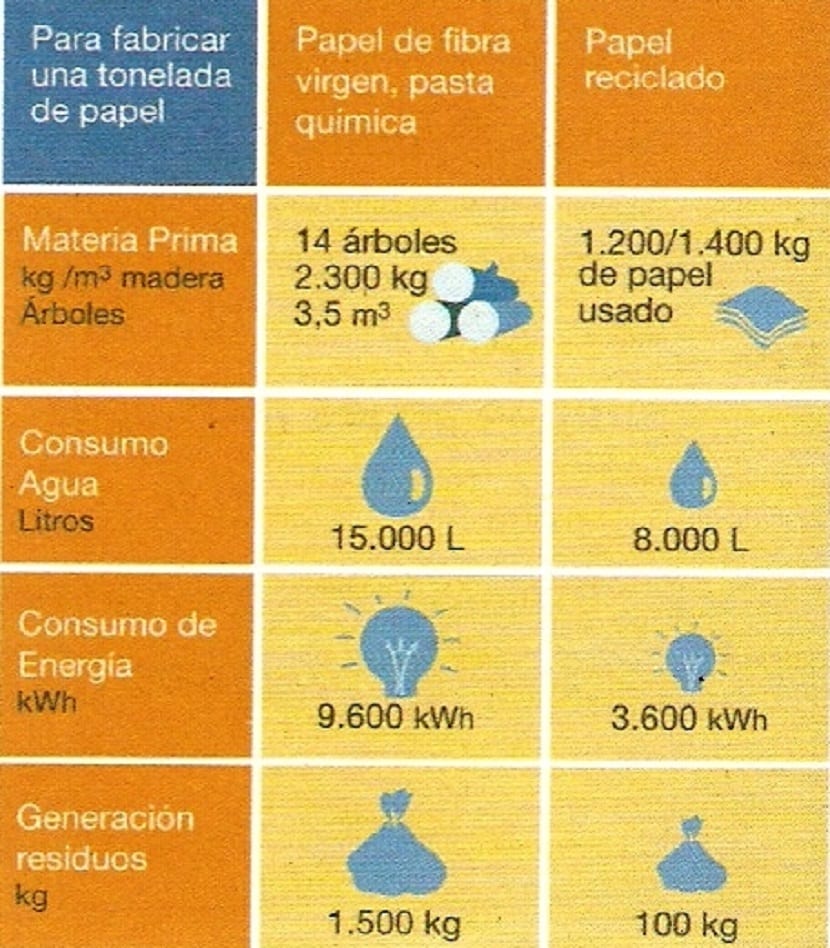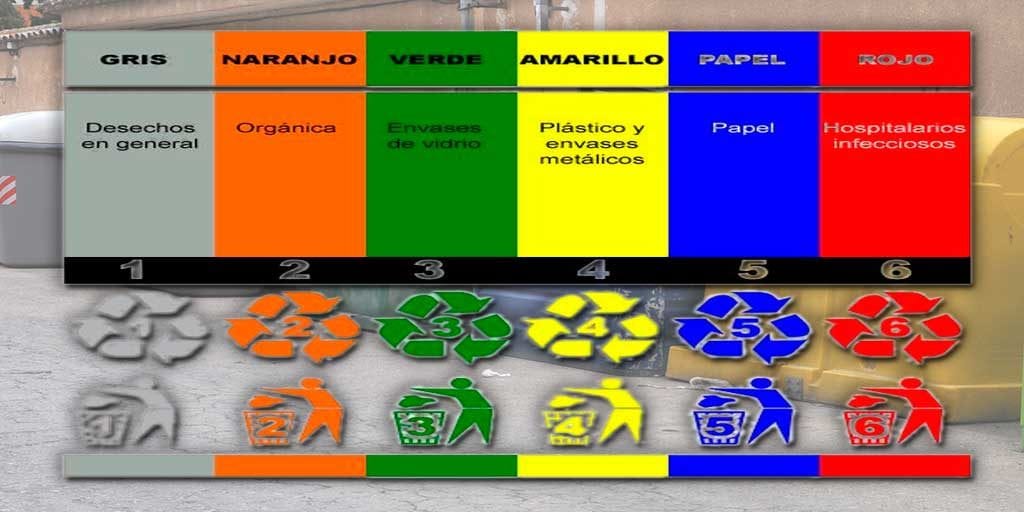
Every time they see more recycling containers down the street since people gradually become aware and begin to recycle, although for the newest there are always the same doubts.
In this article we will explain about recycling, the 5R rules, recycling containers and what can be recycled in each one and what not, in addition to some recycling containers for home, really the main problem to start recycling for space In the home.
Recycling
Recycling is a process that aims to turn waste into new products or in matter for its next use.
With this process in full use, what we prevent is the disuse of potentially useful materials, we can reducir the consumption of new raw material and of course reduce the use of energy for its creation. Besides, also we reduce air and water pollution (through incineration and landfills respectively), and also reduce greenhouse gas emissions.
It is important to recycle since the recyclable materials are many such as: electronic components, wood, fabrics and textiles, ferrous and non-ferrous metals and the most popular materials such as paper and cardboard, glass and some plastics.
The 5R rules
Recycling is therefore a key component for reducing waste (one of the environmental problems that we are currently suffering from) and it is the fifth component of the 3Rs, some basic rules whose objective is to achieve a more sustainable society.
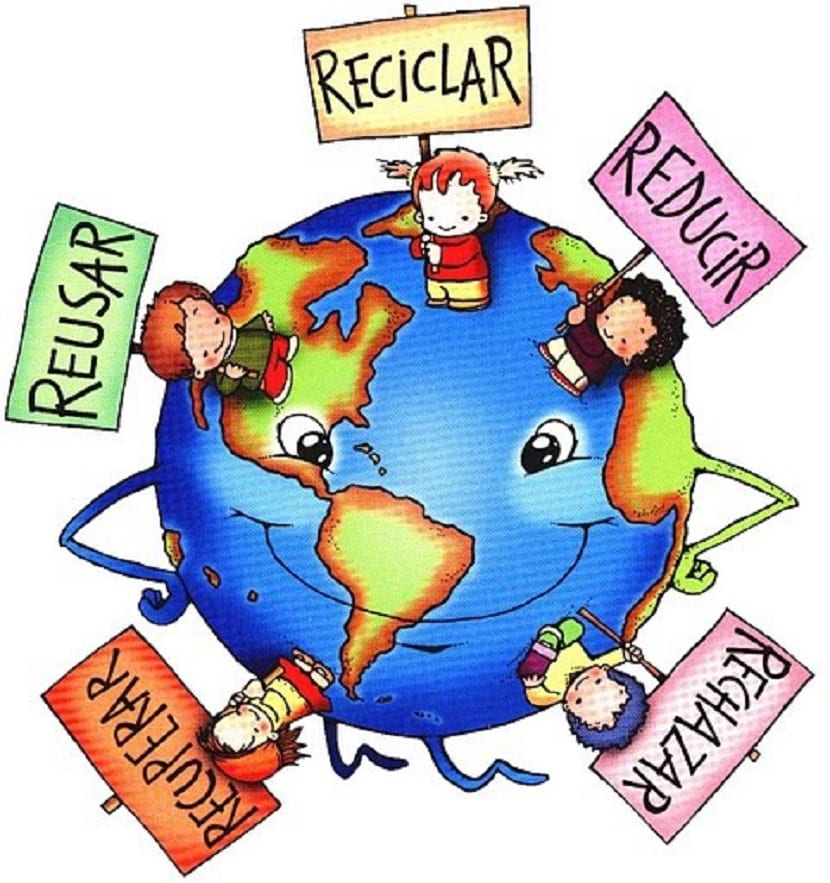
Reduce: These are the actions carried out to reduce the production of objects susceptible to becoming waste, with measures of rational purchase, proper use of products or purchase of sustainable products.
It is the first habit that we must incorporate into our home since we will have a significant saving of the “pocket” as well as of space and materials to recycle.
Repairs: There are endless items that are susceptible to this R. Scheduled obsolescence is just the opposite and is what you have to fight against.
Everything has an easy solution and first of all we must try to repair any product, be it furniture, clothing, electronic devices, etc.
Re-use: are the actions that allow the reuse of a certain product to give it a second life, with the same or a different use.
That is, measures aimed at repairing products and extending their useful life.
To recover: We can recover some materials from the waste object and separate them to give them another use, a more common example is usually that of metals that can be separated from the different equipment that we dispose of and can be used again.
Recycle: We have already seen it, it is the process with the relevant waste collection and treatment operations that allow them to be reintroduced into a life cycle.
Waste separation at source is used to provide suitable channels.
Recycling containers
Having said all this, we go to the recycling bins, which as you know, the main ones are 3 yellow, blue and green.
For the newest people in this and for the most veteran but still with certain doubts, they are usually done a few times (per year) environmental education campaigns or programs on waste and recycling, with the aim of raising awareness and awareness of the environmental impact of waste generation, as well as pro-environmental measures to minimize it.
These campaigns or programs are usually done by the Junta de Andalucía, the Andalusian Federation of Municipalities and Provinces (FAMP), Ecoembes and Ecovidrio And it's great for people to learn how to recycle, since today there are many people who do not fully know how to recycle.
These sites give information and advice on how to recycle in an outstanding way and that is, to start recycling, we will have to know what the domestic waste: are those generated in homes as a consequence of domestic activities.
The most frequent are the remains of organic matter, plastic, metal, paper, cardboard or glass containers and cartons. And, as you can see, almost everything is recyclable.
With this little introduction that I have offered, I am now going to where it really matters: how to better separate the waste we generate, and for this a selective separation which consists of grouping the waste in different containers according to their characteristics and properties.
Below are all the containers along with the specific waste from each container:
- Organic container and remains: organic matter and discards from other containers.
- Yellow container: light plastic containers, cartons, cans, aerosols, etc.
- Blue container: cardboard and paper containers, newspapers and magazines.
- Green container: glass bottles, jars, jars and jars.
- Oil container: oil of domestic origin.
- Sigre Point: medicines and their packaging. They are found in pharmacies.
- Battery container: button and alkaline batteries. They are found in many shops and municipal facilities.
- Textile container: clothes, rags and footwear. Many associations have containers and collection services.
- Lamp container: fluorescent, energy saving light bulbs and LEDs.
- Other waste container: ask your city council where they are.
- Clean point: bulky waste such as mattresses, household goods, etc., remains of paint, electronic devices and household hazardous waste.
Now, the most used are generic containers (organic matter), yellow, green and blue because they are the waste that we generate the most.
Yellow container
We each use more than 2.500 containers per year, being more than half of them plastic.
Currently in Andalusia (and I am speaking of Andalusia since I am from here and I know the data better) more than 50% of plastic containers are recycled, almost 56% of metals and 82% of cartons. It's not bad at all!
Now look at the plastic cycle and a small illustrative graph, where you can see the first application and use after recycling.
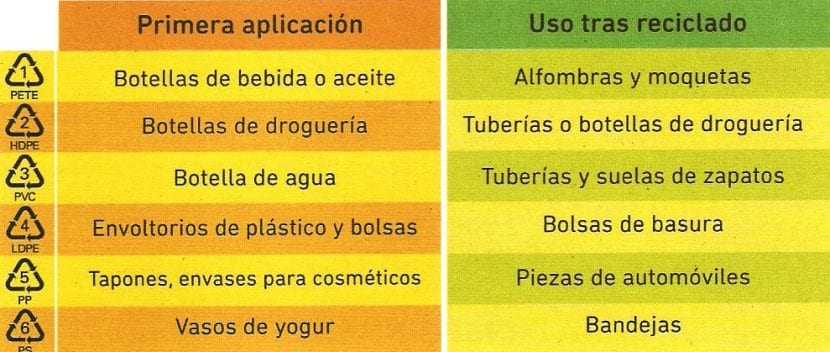
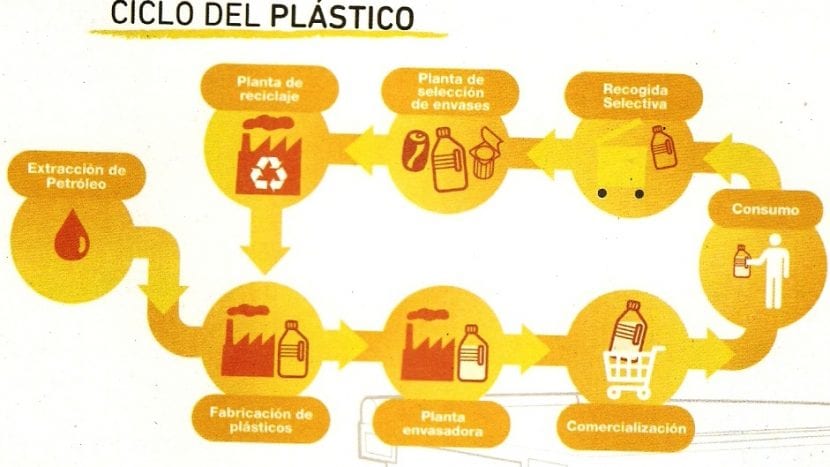
To end this container, we must say that the waste that DO NOT going to this container are: paper, cardboard or glass containers, plastic buckets, toys or hangers, CDs and household appliances.
Recommendation: Clean the containers and flatten them to reduce their volume before throwing them into the container.
Blue container
Previously we have seen what is deposited in the containers, but not what DO NOT It should be put in them and in this case it is: dirty diapers, napkins or tissues, cardboard or paper stained with grease or oil, aluminum foil and cartons, and medicine boxes.
Look at the paper cycle and a fun fact.
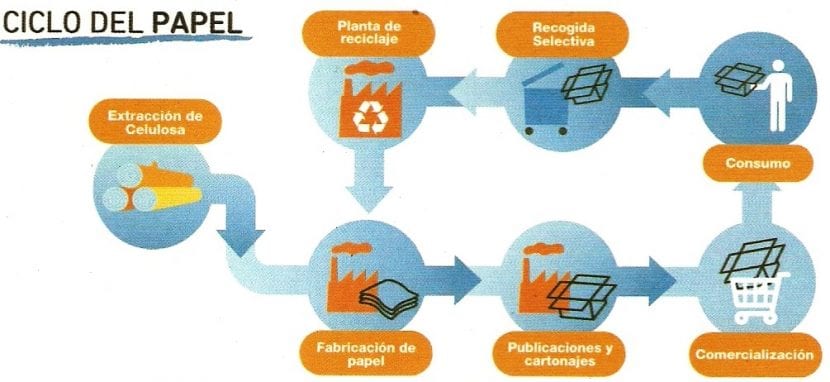
Recommendation: Fold the cartons before putting them in the container. Do not leave boxes out of the container.
green container
As DO NOT should be deposited in this container are: glasses and glasses made of glass, ceramic, porcelain and mirrors, light bulbs or fluorescent lamps.
Recommendation: Remove the lids from the glass containers before taking them to the container as it greatly impairs the recycling process
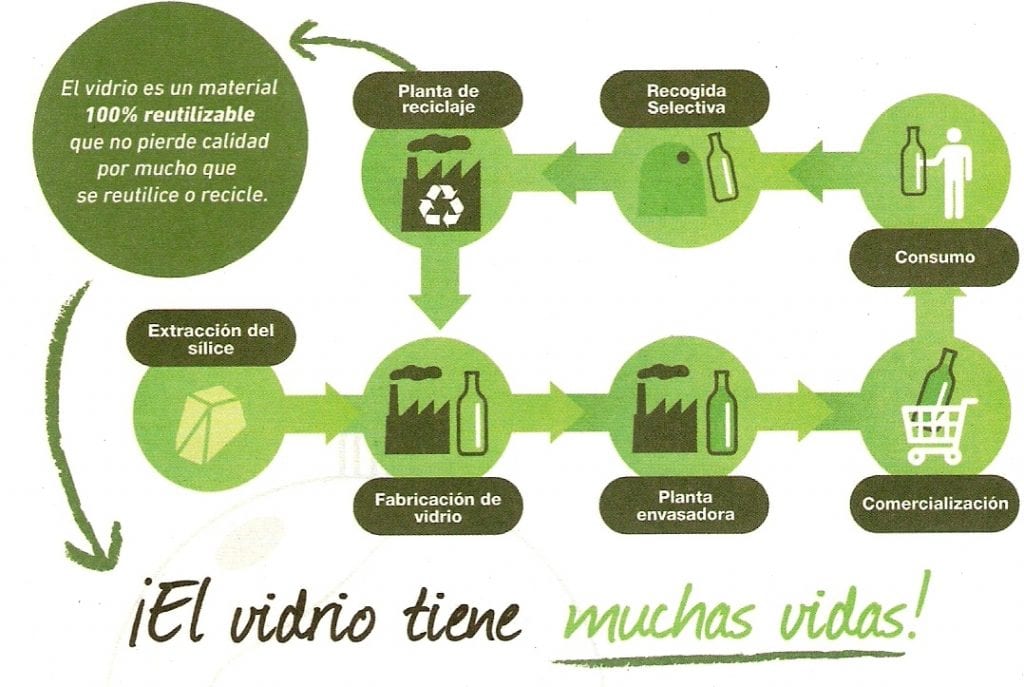
For each 3000 glass bottles of a liter that are recycled can save:
- 1000 kg of waste that does not go to the landfill.
- 1240 kg of raw materials that must not be extracted from nature.
- The equivalent of 130 kg of fuel.
- Reduce air pollution by up to 20% by manufacturing new packaging from recycled glass.
If we get out of these containers and go to the most used of all, that of organic matter, we can also reduce and have a better use of this since even organic matter can be transformed into compost, which can be used as compost.
If you want to know more about compost you can visit my article on my personal blog «Conference on recycling and composting and Workshop on composting as a waste assessment technique» where you will learn the importance of compost and how to do it at home in addition to building a compost bin.
Recycling bins at home
The main problem that many people have is not the ignorance of recycling or bad recycling but the "laziness" that comes from going to the containers or doing the separation at home, either because of the space or for another circumstance.
If you are one of those who lack space, you can always manage to be able to recycle properly, on the Internet you can find many ideas or suggestions to adapt them to your home, some, it is true that they occupy more or cost money but it is always you who decides in the end.
Like I said, they cost money like these home recycling bins. It is the most comfortable when it comes to getting to work, you simply buy it and use it at home.

Others are more elaborate but cheaper like the ones I'm going to show you below.

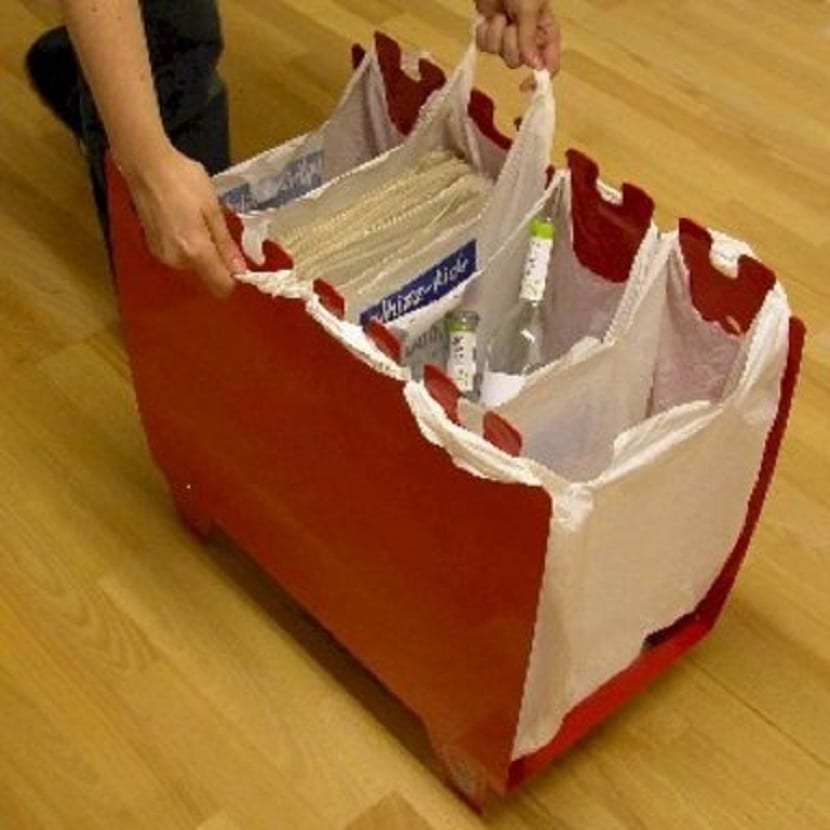
With old buckets or cardboard boxes you can make your own recycling bins as I have done for example this summer in the summer schools where I have worked.
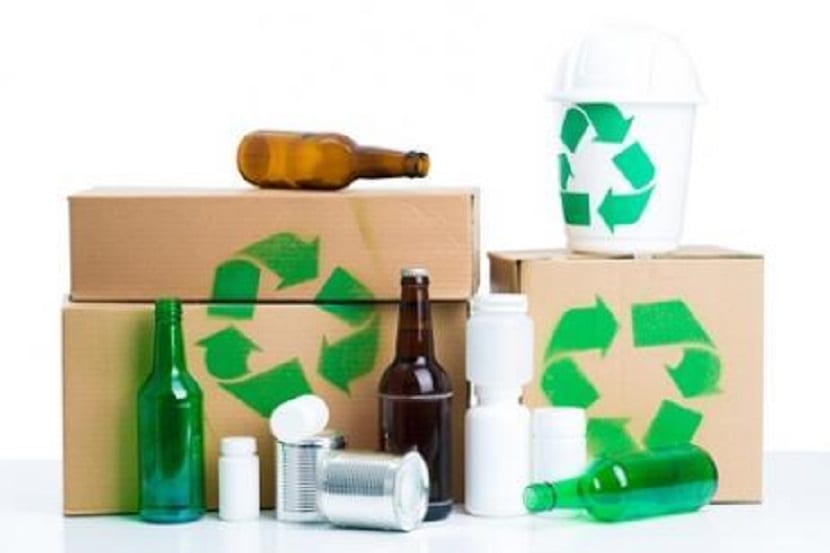
In the end the children learn the value of recycling and even more the other R's since we are reusing material to give it another use and we reduce its consumption.
As you can see there are many solutions, just you must find the most suitable for you.
If by chance you are like me, no lack of space, the following is as easy as putting a large bag on top of the washing machine and throwing everything that is going to be recycled and when it is full go to the containers and separate it there same.
I know that it is faster and more convenient to go to the recycling container area and throw everything away since you have it already separated but each one has what they have and the important thing in the end is that you recycle.
I hope it has served you and that you reduce, recycle and reuse to make a better life.
